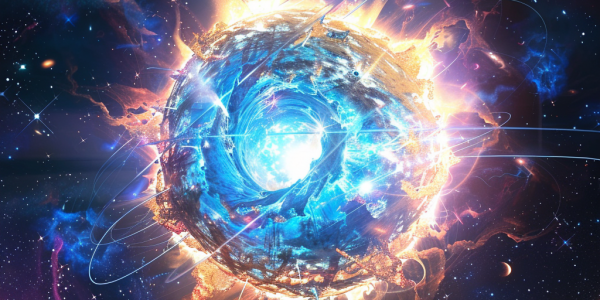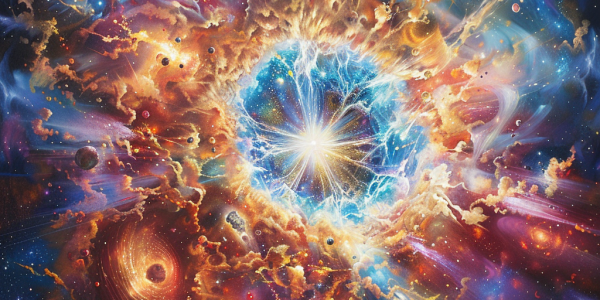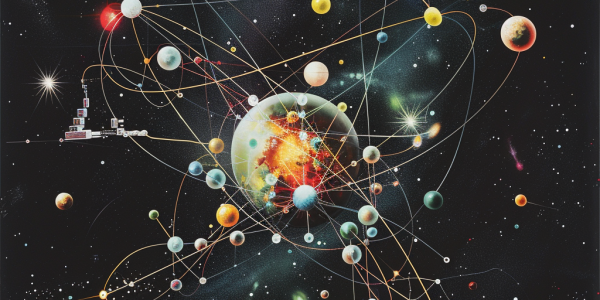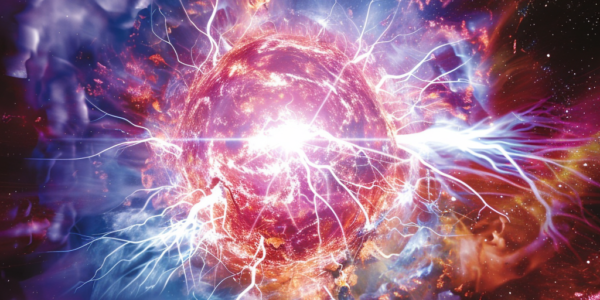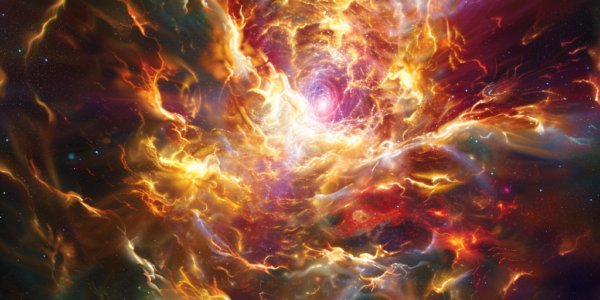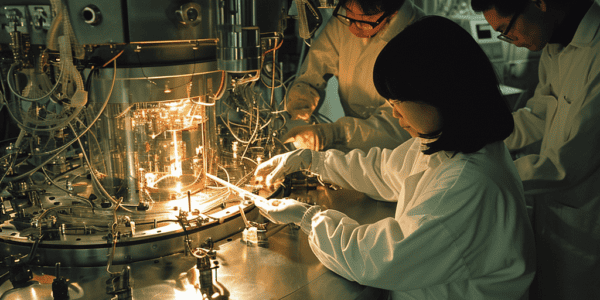Exploring the Complex Nature of Neutron Stars and Quark Matter
Explore the complex nature of neutron stars, remnants of massive stars primarily composed of neutrons. Recent research reveals their intricate internal structures, including the potential for exotic quark matter. Discover how pulsars, rapidly rotating neutron stars, provide insights into their density and behavior, shedding light on the extreme conditions within these celestial phenomena.
Astrophysicists Measure Temperatures in Neutron Star Collision, Unveiling Heavy Element Origins
Astrophysicists at the Niels Bohr Institute have made a groundbreaking discovery by measuring the temperature of elementary particles from neutron star collisions, leading to the formation of the smallest black hole ever recorded. This research, published in Astronomy & Astrophysics, reveals critical insights into the creation of heavy elements like gold and platinum, highlighting the significance of neutron star mergers in the cosmic landscape. The study emphasizes the importance of global collaboration among observatories in unraveling the mysteries of the universe’s most violent events.
Pulsars May Illuminate Dark Matter Mysteries Through Axion Detection
Recent advancements in astrophysics reveal that rapidly spinning neutron stars, or pulsars, may play a crucial role in detecting dark matter through the production of axions. Research from the University of Amsterdam suggests these elusive particles could be generated in significant quantities, offering new insights into the universe’s mysteries and the fundamental nature of dark matter.
Breakthrough in Nuclear Fission Research Reveals Insights on Neck Rupture Phenomenon
Recent research by the University of Washington and Los Alamos National Laboratory has advanced our understanding of nuclear fission, specifically the neck rupture phenomenon. Utilizing the Summit supercomputer, the team conducted the first fully microscopic simulation of this process, offering new insights into the dynamics of fission and the role of scission neutrons. Published in Physical Review Letters, these findings challenge existing theories and highlight the importance of computational physics in exploring nuclear processes, with implications for nuclear medicine and energy generation.
MIT Researchers Make Groundbreaking Discovery of Neutronic Molecules
MIT researchers have made a groundbreaking discovery of ‘neutronic molecules,’ revealing that neutrons can bind to nanoscale atomic clusters known as quantum dots. This finding could offer valuable insights into material properties and quantum effects, potentially leading to the development of innovative tools for exploring quantum-level phenomena. Unlike protons and electrons, neutrons are subatomic particles that lack electric charge, making them impervious to the electromagnetic force that governs most interactions between radiation and materials. However, MIT researchers have now demonstrated that neutrons can be induced to adhere to quantum dots—comprising tens of thousands of atomic nuclei—solely through the strong force. This unexpected revelation opens up new possibilities for investigating material properties at the quantum level, particularly those stemming from the strong force, and for exploring novel forms of quantum information processing devices.
Neutron Star Mergers Shed Light on Dark Matter
Neutron star mergers provide new physics signals that could shed light on dark matter, according to a study by Washington University in St. Louis. The study, led by physicist Bhupal Dev, establishes constraints on axion-like particles using observations from the 2017 neutron star merger event, GW170817. These particles are prime candidates for constituting dark matter and could bridge the gap between the visible and dark sectors of the universe.
Groundbreaking Discovery of Heavy Element Creation in Cosmos
Scientists have made a groundbreaking discovery using the James Webb Space Telescope (JWST) and the Hubble Space Telescope, revealing new insights into the creation of heavy elements in the cosmos. The collision of two ultradense neutron stars led to the production of metals heavier than iron and silver, including gold. This discovery challenges previous beliefs about the origins of gamma-ray bursts and opens up new avenues for understanding cosmic processes.
Researchers Investigate Tetraneutron Emission in Nuclear Reactor Study
This week, researchers from the Tokyo Institute of Technology have delved into the investigation of tetraneutron emission, a phenomenon that has long been debated within the scientific community. Tetraneutron, an elusive atomic nucleus consisting of four neutrons, has sparked curiosity…

